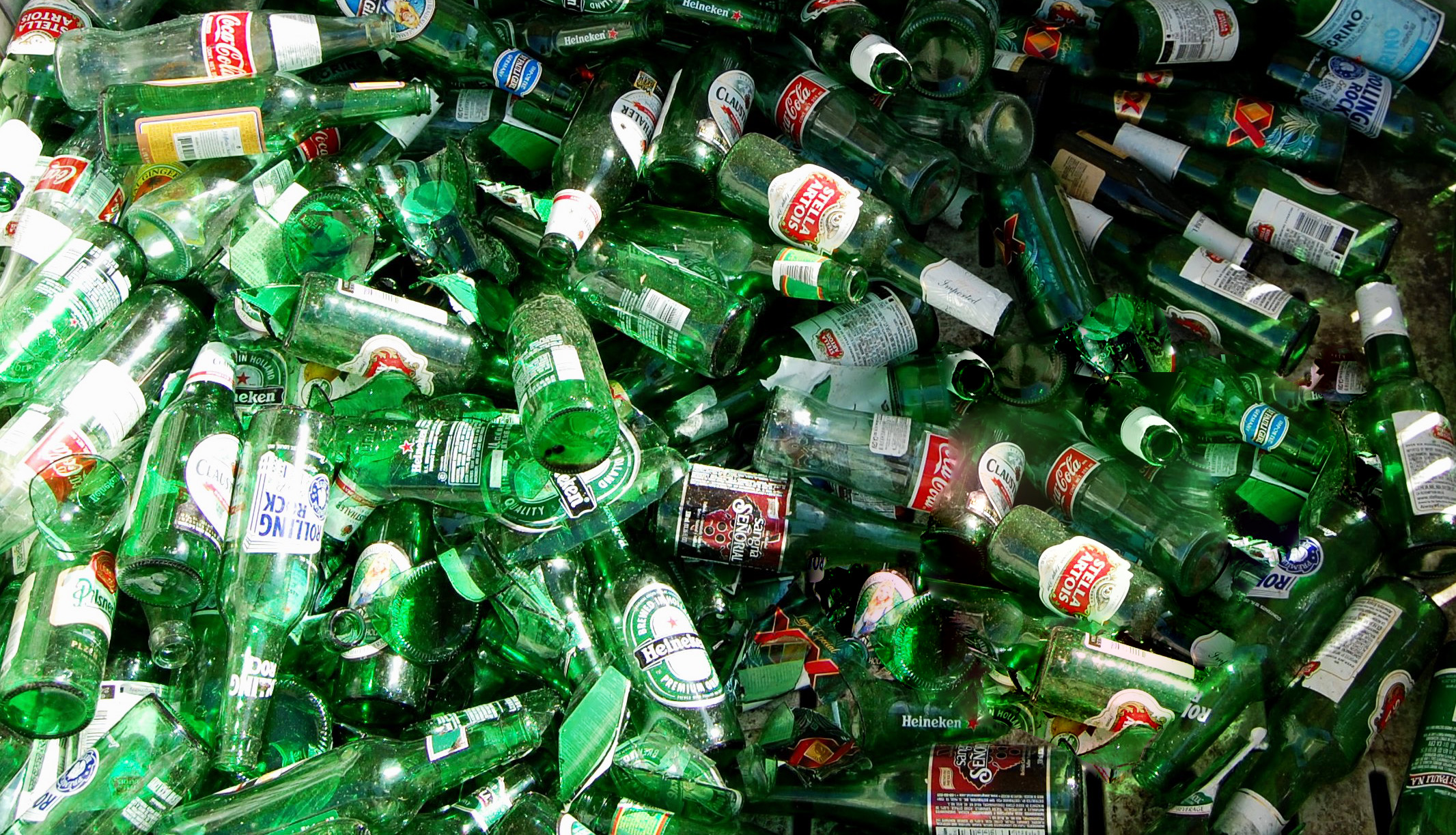In the days of climate change, living environmentally friendly plays a key part in sustaining the current quality of the earth for future generations. Not only private households across Europe do their part in ensuring a greener future, the Governments of different countries have started to take action, by increasing recycling in their country or the use of renewable energy. But what does that mean?
Recycling is defined as “Using waste as material to manufacture a new product. Recycling involves altering the physical form of an object or material and making a new object from the altered material” and renewable energy is classified as “energy from a source that is not depleted when used, such as wind or solar power”.
Overall 35 % of municipal waste was recycled in Europe in 2010, a significant improvement on 23 % in 2001. But how do individual countries experience this development?
Sweden
Less than 1% of Swedish household waste was sent to a landfill last year, instead it was sent to be recycled. But critics argue that the country is dodging real recycling by incinerating waste in waste to energy plants instead of re-using it.
The waste to energy plants are clean and filter out almost all of the toxic gasses that comes out of the incinerators. What does come out is 99.9% non-toxic carbon dioxide and water. There are many who question whether carbon dioxide can be classified as non-toxic, given its effect on global warming.
Managers of paper plants also argue that wood fibre can be used up to six times before being incinerated. If Sweden burns paper before that point it’s exhausting the potential for true recycling. The country incinerated 49.5 per cent of its municipal waste in 2014/15.
Swedish municipalities will invest in new waste collection techniques in the future, like automated vacuum systems in residential areas, removing the need for collection transport, and underground container systems that free up the road and get rid of smells.
On the subject of renewable energy, Sweden was one of the first countries to implement a heavy tax on fossil fuels in the early 90s and now receives about half of the country’s electricity from renewables. In 2015, 57% of Sweden’s power came from sources such as hydropower and wind power, with the remainder coming from nuclear plants.
Last year, Sweden’s prime minister announced at the UN General Assembly the goal to run Sweden entirely on renewable energy by 2040. The country wants to invest in onshore wind power, in order to make the country completely fossil-free in just about 23 years.
France
In the 1990s, almost half of the waste France produced was put into storage facilities. Today, the recycling rate of waste skyrocketed to 60% in 2010, all waste combined. Only one third of the waste is still being transported to storage centres; the rest is incinerated either with or without energy recovery.
In 2014, 17 million tons of recycled materials were used in France while less than half of that amount of waste was sent to storage facilities. The Energy Transition for Green Growth Act set a target of reducing landfills by 50% by 2025.
In order to meet that target, several steps have been taken by the central government and towns. Monitoring is already underway for seven general-purpose recycling projects, but the capital Paris remains very poorly covered. Per 300,000 inhabitants, there is less than one recycling plant.
Still, recycling household waste is becoming increasingly popular and many towns have facilities for doing so. Each area will have collection points for recycling and the containers are colour coded for different types of items such as bottles, plastic, paper and tins.
There was also a law put into place that dictates that if you purchase electronic equipment the shop is now obliged to take the old item off you if you no longer want it. This is to prevent items from being taken to landfill sites.
Newly elected Emmanuel Macron’s government has made further plans in reducing Frances use of fossil fuels. The country is to stop granting licences for oil and gas exploration as part of a transition towards renewable energy. Currently nuclear power stations provide around 75% of France’s electricity, employing about 200,000 people.
A law was passed last year to reduce the figure to 50% by 2025, sparking controversy over job losses due to the closure of up to 20 nuclear power plants.
Germany
“The Green Dot” system, implemented in Germany in the early 90s, has been one of the most successful recycling initiatives. Manufacturers and retailers have to pay for a “Green Dot” on products and the more packaging there is, the higher the fee. This simple system has led to less paper, thinner glass and less metal being used, creating less garbage in the process.
A major part of the success of this system is the proper sorting of garbage. Glass bins for, as the name says, glass, yellow bins for items with the “Green Dot”, green bins for packaging not outfitted with a “Green Dot”, blue bins for paper, brown bins for kitchen waste and grey bins for other household trash, like cigarette buds, hairbrushes or used hygiene products. Of Germany’s municipal waste, 45% is recycled, 38% is incinerated and 17% is composted.
Renewable energy is also being taken very seriously. Germany raised the proportion of its power produced by renewable energy to 35% in the first half of 2017 from 33% in 2016. The country is aiming to shut down all of its nuclear power plants by 2022. The use of renewable energy has been rising steadily over the last two decades partly due to the Renewable Energy Act which was reformed to cut the costs of renewable energy for consumers.
Experts say days like April 30 2017, where 85% of all the electricity consumed in Germany was being produced from sources such as wind, solar, biomass, and hydroelectric power, will become “completely normal” by 2030, as the federal government’s energy revolution begins to reap the benefits of investments made in renewable energy sources since 2010.
The government has set a target of 80% renewables for power consumption by 2050 and it aims to cut greenhouse gas emissions by 40% in 2020 from 1990 levels and by 95% by 2050.
Czech Republic
Recycling in Prague and in the Czech Republic has become a big deal over the past years, with the nation ranking fifth in Europe for its electronic waste recycling efforts in 2010. The capital Prague offers its inhabitants over 3,000 recycling containers (for glass, plastic, paper and beverage containers), 14 collecting yards, and 280 electronic stores that accept electronic waste. You can also return beer (and even some wine) bottles at many supermarkets and receive 3 CZK in cash or as a credit toward your next store purchase.
The Czech Republic also has doubled the amount of plastic waste being recycled in the span of a decade. According to statistics, Czechs are in second place when it comes to recycling plastic PET bottles. Despite the progress, recycling is still not convenient for many people. While regular bins are positioned in front of most buildings, recycling bins require a longer trip in more rural areas.
Approximately 70% of municipal solid waste in the Czech Republic is landfill. EU mandates require that 50% of all waste needs to be recycled by 2020. In order to meet this requirement, the Czech Republic has implemented a heavy landfill tax. After 2024, landfilling recyclable waste will be prohibited by law. Waste incineration and waste-to-energy are also in need of adjusting in order to meet EU waste reduction requirements. But one of the Czech Republic’s most difficult challenges is dealing with toxic waste and brownfields that remain from the communist era.
Heavy air pollution is also a problem especially in the northeast of the country, since approximately 95% of energy comes from coal-fired and nuclear power plants. That is why the government is starting to subsidise operators of renewable energy plants under the programme “Entrepreneurship and Innovation for Competitiveness” to encourage a bigger use of renewable energy sources.
Wales
The latest reports put Wales third in the municipal recycling world rankings (and second in Europe) behind the leaders Germany and Taiwan.
To further increase this development, eight Welsh Local Authorities were awarded up to £3million to help increase the amount of waste they recycle. The funding helps the selected authorities to update their recycling methods, increase recycling rates and potentially create new jobs.
Wales also continues to be the leader in the UK when it comes to recycling. The figures 2016 show the average combined reuse, recycling and composting rate in Wales is 62%, which shows an increase of four percentage points from the previous year. Now Wales is recycling double the amount it did a decade ago and continues to set an example for other UK nations.
The latest figures also exceeded the Welsh Government’s 58% recycling rate target, the next is for a 64% recycling rate by 2020 and 70% by 2025.
Energy wise, Wales has signed up to the 2020 EU target of 20% of energy requirements coming from renewable sources. With some of the best renewable energy resources in Europe, Wales has an opportunity to be a leader in their development.
The Government set out a plan to enable Wales to meet its projected energy demands entirely from renewable sources by 2035, but significant numbers of potential renewable energy projects in Wales have struggled to go ahead and obtain funding due to cuts in subsidies and other factors.
By Catherina Arnd













